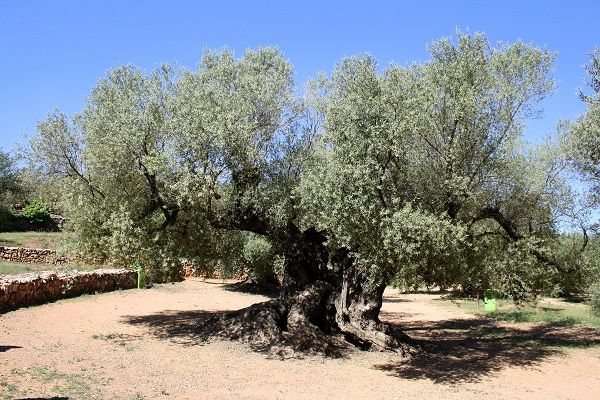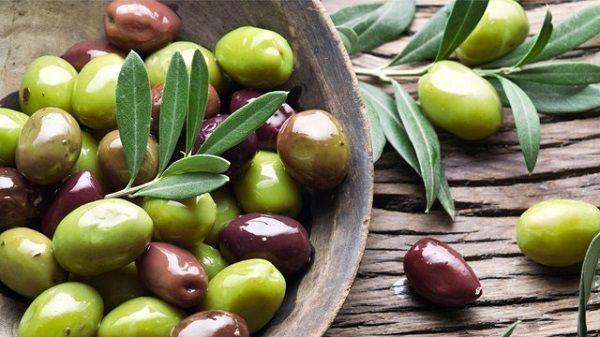All about Spanish Olive Oil
Spanish Olive Oil, Aceite de oliva in Spanish - Olive oil also know as liquid gold is well known for its health benefits and is a key component of the Mediterranean diet.
The Spanish have the Phoenicians to thank for bringing the first olive trees to Spain in around 1050 B.C. But it was not until the Romans occupied the Iberian Peninsula (212 BC) that olive groves began to spread throughout Spain and then the Moors introduced more advanced cultivation and production techniques. There are now more than 200 olive varieties in Spain
Spain produces over half of the world’s olive oil with more than 350 million olives harvested every year, the province of Jaén in Spain’s southern community of Andalusia produces more olive oil than all of Italy combined. Much of that oil is exported and bottled in other countries such as Italy but, plenty stays right here in Spain as the average Spaniard consumes 10 times as much olive oil as Americans Spanish annual consumption of olive oil equates to almost 10 litres of olive oil per person.
Andalucía, is Spain’s largest producer of extra-virgin olive oil – the unrefined, pressed juice – with hot, dry climates guaranteeing a deep, strong-bodied flavour. Second is Catalonia, a key producing region where the oil has a soft, mineral character, third is Castilla-La Mancha’s fruity and thick versions which are used for first-rate blends (as grapes are for fine wines), and then the Balearic islands such as Mallorca, whose oil is mild and sweet mainly due to the coastal breeze. Spain’s Protected Designation of Origin system was launched in 1985 to safeguard distinct oil profiles, and now includes 29 different regions.
Olive Trees
Olive trees live an incredibly long time, having an average lifespan of between 300 - 600 years and Spain is home to some of the oldest olive trees in the world. The Museo del Arión in Tarragona, is a museum that displays trees that are over 1,000 years old and the oldest of them all is said to be over 2,000 years old!
Spain has around 300 million olive trees.

The oldest olive tree in all of Spain, and perhaps the world! Photo Credit: Spanish Sabores
Spanish Olives
Just like grape varieties for winemaking, the secret to great olive oil is great olives! Spain is home to more than 200 different types of olives, 24 of which are commonly used to make olive oil. Each type of olive has a unique flavour, from spicy to sweet, smooth to acidic. Professionals are able to detect a multitude of tasting notes, just like wine tasters.
Olives can be harvested anytime until completely ripe and black. Green Olives that are harvested early can make green oils, while late-harvest oils are generally golden. The only difference between green and black olives is ripeness.

Types of Olive Oil - Virgin, Extra Virgin, Ordinary Virgin, and Lampante Virgin.
Depending on the quality of the olives, how they are pressed and how many times, oils can change drastically from excellent to inedible. The European Union strictly regulates how oils can be classified.
The acidity level of oil refers to the amount or percentage of oleic acid. If the olives fall from the tree and burst open on the ground, it can occur through the process of oxidation. It can also take place if the olives are stored too long before pressing. The lower the percentage of acid, the better the oil and more fruity the taste.
The most important thing to look for on the label is the quality-defining words Virgin or Extra Virgin.
EU laws state that olives should be harvested and processed naturally, without using any sort of processes, especially thermal processes, which alter the oil, permitted processes are - washing, decanting, centrifuging and filtering.
The best oils to buy are Extra Virgin or Virgin, not types that are refined or blended. Ordinary Virgin and Lampante are names that you probably will NOT see in your local supermarket but they may be found in blended oils.
Extra Virgin Olive Oil
The olives have to be pressed less than 24 hours after being harvested using either a traditional press or a centrifuge system (common these days). No chemicals can touch the oil and it must be 100% olive juice, no additives. It must not be heated above 27° C (80.6°F). Extra virgin olive oil can not have any defects in colour, smell or taste and has to have an acidity level below 0.8 percent (most are under 0.3 percent).
Stick with extra virgin Spanish olive oil, you cannot go wrong.
Virgin
These are also chemical-free and can only be pressed using traditional presses or centrifuges. The difference with these oils is that they are allowed to have some slight imperfections of colour, smell and taste.
Olive oil experts use a 10-point scale to judge oils on an array of quality criteria. Extra virgin oils have to achieve a perfect score. Virgin oils can have up to 3.5% defects and an acidity of up to 2 percent.
As virgin oils are still raw and unheated they retain many of the health benefits of extra virgin oils. Most virgin oils are mixed with refined oils and sold as just plain “olive oil”
Ordinary Virgin Olive Oil:
Ordinary Virgin olive oil can have an acidity of no more than 3.3%. Only sold in Spain to wholesalers.
Lampante Virgin Olive Oil
Like Ordinary Virgin olive oil, Lampante Virgin Olive Oil can have an acidity of no more than 3.3%. This type of oil is only sold in Spain to wholesalers. It is made from olive oil that for one reason or another either has a high acidity level or an undesirable flavour or aroma and to correct the problem it is put through a refining process.
Olive Oil
This type of oil is made by mixing refined olive oils with virgin olive oils, except Lampante. The acidity of the oil can be no more than 1.5%. Once a Lampante Olive Oil is refined and mixed with a small amount of extra virgin or virgin olive oil to give it flavour, this is sold as simply “Olive Oil.”
How to Store Olive Oil
Store it in a cool, dry, dark place. Do not store your olive oil near a heat source such as the oven or it will quickly turn rancid. Light is very damaging as well so it is best to keep it in a cupboard, not on the counter. It should be used within a year of being produced because it starts to lose flavour and nutritional benefits.
Health Benefits of Olive Oil
Olive oil is packed with health benefits: It’s anti-inflammatory and antibacterial.
It Improves heart health, and brain function, it can also help to manage blood sugar levels, Improves skin health as it contains vitamin A, E, D and K and antioxidants, it can also help with stomach problems such as IBD, it also helps to reduce inflammation and can help with rheumatoid arthritis pain.
1 tablespoon, or 13.5 grams of olive oil, provides: 119 calories, 13.5 g of fat, of which 1.86 g is saturated 1.9 milligrams (mg) of vitamin E 8.13 micrograms (mcg) of vitamin K. The main fat it contains is monounsaturated fatty acids, which experts consider to be a healthful fat.
It also contains traces of calcium and potassium, as well as polyphenols, tocopherols, phytosterols, squalene, and terpenic acids and other antioxidants.
Tips for using olive oil
Drizzling it on a salad or adding it to a salad dressing. Drizzling it on a freshly made bread, using it when making bread, using it instead of other fats when frying or sautéing, many varieties of olive oil are perfect for frying. The reason some say not to use it is that it gets hot very quickly but won’t burn.
To give a different flavour to grilled meat, just add a few roasted coffee beans to your Extra Virgin Olive Oil and let it marinate for a couple of days, then use it when grilling any type of meat.
Did you know that you can reuse the olive oil by filtering it after each frying? This way you can get much more out of them and still preserve all the healthy properties, and also help reduce food waste.
All about Spanish Chorizo Sausage
Find lots of Spanish Recipes HERE
You may wish to Like us on Facebook for regular updates or follow us on Twitter




The town of Altea still has a municipal olive press, and people have been flocking to use it to squish their home grown fruit. In the past two months alone.100,000 kilos have passed through the press, producing more than 20,000 litres of oil. The press is open to residents of any of our local towns, and there have been olives arriving from places like Benidorm, La Vila Joiosa, Orxeta, Relleu, La Nucia, Polop, Tárbena and Calpe. The price is the same for everyone, 22 centimos for every kilo of olives that is put into the press.
The town hall is reporting that 150 hectares of land with olive trees have been recuperated in the municipality of Altea alone, the high prices for the liquid gold oil now making the trees a worthwhile proposition. More ...